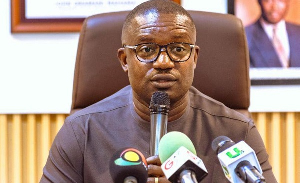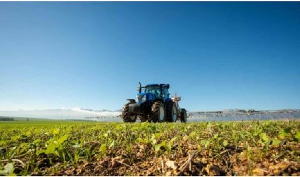A GNA Feature by Paul Achonga Kwode
Tamale, May 18, GNA - The overall performance of the economy of Ghana over the past years has shown an immense improvement towards the achievements of the middle-income status target by 2015. Statistics at the Ghana Statistical Services indicate that in 2000, the GDP rate was at 3.7 per cent; 2001, 4.2 per cent; 2002, 4.5 per cent; 2003, 5.2 per cent; 2004, 5.6 per cent; 2005, 5.9 per cent, and in 2006 grew to 6.2 per cent.
Ghana's inflation rate hit single digit in March (9.9 per cent) and April (9.5 per cent) in 2006, but could not be sustained owing to the impact of the upward adjustment in domestic prices of petroleum products in line with the rising price of crude oil on the international market. In the event, inflation edged up to 10.5 per cent at the end of October 2006 but however gained a single digit of 9.8 per cent in March 2007.
The economy of Ghana which had been shattered into stagnation over the past four decades with the currency rendered unstable and eaten away by high inflation which left massive unemployment and national institutions weakened, had now been stabilised and poised for accelerated development.
Ghana accessed the Highly Indebted Poor Countries (HIPC) initiative and adopted the Growth and Poverty-Reduction Strategy I (GPRS I) in 2001. The Country's Development Partners acknowledged the sacrifices of the young democracy and decided to forgive the nation about eight billion dollars debts accumulated.
On reaching the HIPC completion point in July 2004, two billion dollars of debt was cancelled outright by the Paris Club of creditors with a further two billion dollars to be forgiven in instalments over the next 20 years.
Under the G-8 and multilateral debt relief, Ghana is to be forgiven additional 4.2 billion dollars leaving the country with an immense opportunity to pursue its national aspirations.
"Ghana is currently one of the best-performing economies in Africa, by improving policies and institutions and investing in infrastructure and basic services and bringing poverty levels from 53 per cent in 1992 to 35 per cent in 2003", the International Development Association (IDA), a part of the World Bank described the economy of the country in February 2007.
It continued that Ghana is likely to surpass the Millennium Development Goals (MDGs) of halving poverty by 2015 and economic growth had averaged 4.5 per cent from 1983 to 2000 but accelerated to 5.8 per cent in 2004 and 6.0 per cent in 2005 in response to Government's programmes of reforms.
The International Development Association also said the country's access to electricity was the highest in the Sub-Saharan Africa outside South Africa and augured well for the achievements of a middle-income status.
Experts say good democratic tenets within the framework of good governance; private sector development; rule of law; respect for human and property rights and far-sighted fiscal and economic management had been the major driving forces that are propelling the Country to a middle-income status.
THE MAJOR DEVELOPMENTS IN THE AGRICULTURAL SECTOR
The Country's agricultural production over the years has been tremendous.
In 2006 the National Seed Support Service produced 55 tonnes of foundation seed maize; processed 500 tonnes of certified maize seed; eight tonnes of sorghum and 25 tonnes of rice foundation seeds for planting. A total of 200 tonnes of maize grains was processed for storage.
The Inland Valley Rice Development Project extended credits to 905 farmers to put 340 hectares of rice under the Nerica Rice Dissemination Project in 2006.
The Irrigation Company of the Upper Region (ICOUR) in Navrongo facilitated the production of 200 tons of paddy rice seed; 1,800 tons of rice grains and also cropped 220 hectares of millet and 34 hectares of soyabeans at its Vea and Tono Dams Projects.
Food prices had been stabilize to improve the well being of farmers and to facilitate the establishment of National Strategic Food Stock, the Ministry of Agriculture rehabilitated three warehouses at Tamale and Yendi for grain storage. The Ministry in addition assisted farmers in the Northern Sector with land preparation and seeds for the establishment of 10,000 hectares of cotton.
Grains and Legumes Development Board (GLDB) produced foundation seeds to enhance farmers' access to viable and high yielding leguminous seeds in the minor season. As a result, 20 tonnes of foundation seed groundnuts was produced to enable farmers to access rosette resistant groundnut seeds.
About 1,571.9 hectares of cashew fields was in 2005-6 established with the assistance of the Cashew Development Project. About 9,000 unproductive cashew trees (90 hectares) within the 10 Project Districts were stumped and grafted with scion materials taken from trees with desirable characteristics to increase yields.
In collaboration with the Crop Research Institute (CRI), technological packages were developed to enhance cashew production. The packages included vegetative propagation techniques; development of a strategy for canopy substitution and control of Cashew diseases. The World Fact book had in 2007 described the economy of Ghana, as roughly twice the per capita output of the poorest countries in West Africa though remains heavily dependent on the international financial and technical assistance.
The Country's democracy had also been rated in Africa as the best emerging country in political stability and the beacon of hope for the rest of Africa.
It believed that one of the outcomes of good governance is economic development and the stronger the democratic performance, the vibrant such an economy would be.
CAN THE COUNTRY OVERCOME THESE OBSTACLES?
The 2006 birth rate estimate of the country stood at 30.52 births per every 1,000 birth and the death rate was 9.72 deaths per 1,000 people. The infant mortality rate is 55.02 deaths per every 1,000 live births. Life expectancy at birth was also estimated at 58.07 years for males and 59.69 years for females and total fertility rate was 3.99 children born per woman (source; World Fact Book). This is highly undesirable. The country still remains the second in the world in guinea worm cases. The current records show that at the end of the year 2006, out of the 4,132 cases of guinea worm infections recorded in the Country 3,653 representing 88.4 per cent cases were recorded in the 10 most endemic districts, all of which were in the Northern Region.
Can the country obtain a middle-income status with these debilitating current statistics on health? It is heartening to say that the Country is making strenuous effort to improve upon the health status of the people since health good health is one of the major MDGs. Ghana is hit with yet another traumatic situation making the obtainment of a middle-income status doubtful and this is undoubtedly the energy crisis. The country since September 2006 has been faced with low electricity supply resulting in low productivity in the industries. Volta Aluminium Company (VALCO) had to be closed down and consequent laying-off of workers.
The level of water at the Volta Dam on May 16 2007 was 236.04 feet compared to the maximum operational level of 278.00 feet and minimum level of 240.00 feet.
There is not denying the fact that energy is the major driving force of all economies in the world and the problems a country would face should it face energy crisis like in Ghana is anybody's guess - low productivity; high cost of production; high inflation; low GDP and high rate of unemployment are likely to arise.
The harm to the economy had already been caused and efforts to reverse the situation to salvage the economy from the looming dangers should be intensified.
Dr Sam Mensah in his publication: "Legislative Alert" maintained that there was consistency among the causes of the Country's economic impotence. Instead of focusing on the activities that would promote sustainable resource base, much energy was expended on attracting unsustainable resources mainly from multilateral and bilateral sources. This results in implementing forced policies that further take the Country away from more efficient resource mobilization and allocation path. This also makes the Country unable to apply targeted interventions to jump-start the financial system because of donor resistance to State participation in financial intermediation.
Ghana, therefore, needs critical measures like investing adequately in the revenue mobilization mechanisms and establishing systems that would formalize economic participation at all levels thus broadening the net for resource mobilization.
Brett Schaefer, a Policy Expert at the Centre for International Trade and Economics at the Heritage Foundation, painted the picture clearly about developing countries like Ghana that "economic futures of developing countries lies predominantly in their own hands through the policies that they choose to adopt and enforce; if countries want to increase per capita GDP, they should adopt policies that are most likely to achieve that results and change their approach to foreign assistance".
Again, a research conducted by the Heritage Foundation indicates that the best way for countries to increase economic growth is to adopt policies that promote economic freedom and the rule of law, which are measured in the Index of Economic Freedom. The strife towards the achievement of a middle-income status is widely outspoken but meeting the goal requires a multifaceted and multi-dimensional approach and policy makers and implementers should focus their target holistically. 18 May 2007
Opinions of Saturday, 19 May 2007
Columnist: GNA














